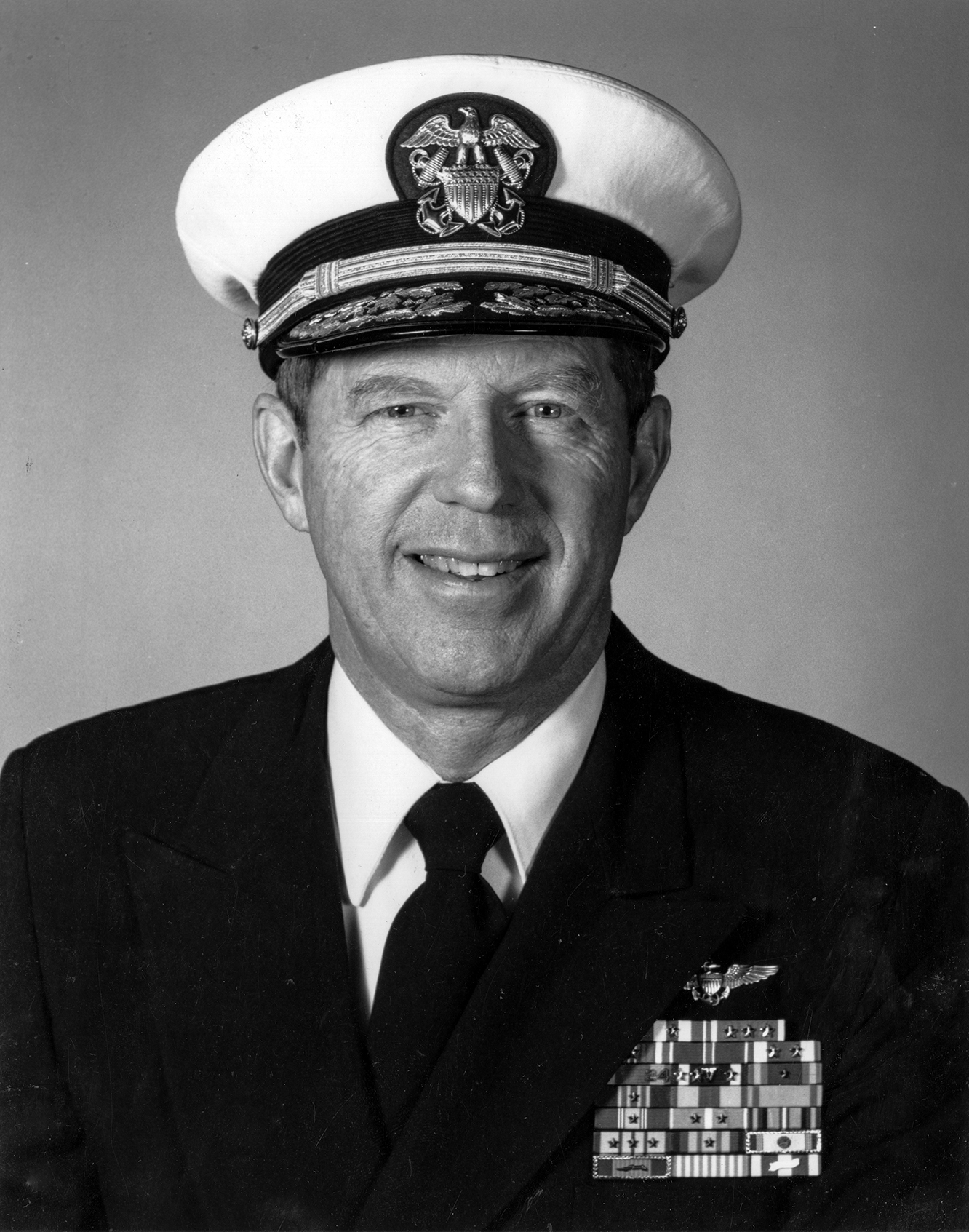
Dunn, Robert F., Vice Adm., USN (Ret.)
(1928–)
A native of Chicago, Dunn was captivated by aviation when he took his first airplane ride at age ten. After a year at Northwestern University in Illinois, he was appointed to the Naval Academy, from which he graduated in 1951. His initial commissioned service, which included Korean War duty, was in the escort destroyer USS Nicholas (DDE-449). That was followed by flight training, during which he earned his aviator's wings in 1953. In the ensuing years he flew the AD Skyraider in Attack Squadron 95 (VA-95), Fighter Squadron 194 (VF-194), and Attack Squadron 196. Dunn was a flight instructor at Pensacola, Florida, from 1956 to 1960, then served as flag lieutenant to the colorful Rear Admiral Joseph "Jumping Joe" Clifton. After aviation safety school at the University of Southern California, Dunn flew the A4D/A-4 Skyhawk in the RAG squadron VA-44 and in the fleet in Attack Squadron 36. Subsequent shore tours were as a student at the Naval Postgraduate School and as the Bureau of Naval Weapons resident representative at the Aerojet-General Corporation. In 1966-67, as a commander, Dunn flew the A-4 in bombing runs against North Vietnam while serving as executive officer and then commanding officer of Attack Squadron 146 (VA-146). Subsequently he was a student at the Joint Services Staff College, Latimer, England, and had shore duty in the Bureau of Naval Personnel. In 1970-71 Dunn had a short tour as Commander Carrier Air Wing Seven (CVW-7). He moved from there to the Sixth Fleet staff and served under Vice Admiral Isaac C. Kidd, Jr., and Vice Admiral Gerald E. Miller. His ship commands were the amphibious command ship USS Mount Whitney (LCC-20) and the aircraft carrier USS Saratoga (CV-60). After promotion to flag rank in the mid-1970s, Dunn was Commander Naval Safety Center, a member of the staff of Commander Naval Air Force Atlantic Fleet, Commander Carrier Group Eight, Commander Naval Military Personnel Command, and Chief of Naval Reserve. His active service concluded with two tours as a three-star admiral: 1983 to 1986 as Commander Naval Air Force Atlantic Fleet and 1987-89 as Deputy CNO (Air Warfare). In 1988-89 was honored as the Navy's "Gray Eagle," active aviator with the earliest designation. After retirement he worked for a time for the U.S. Naval Institute, which he had previously served as a board member.
About this Volume
Based on seven interviews conducted by Paul Stillwell from March 1990 to February 1996. The volume contains 600 pages of interview transcript plus a comprehensive index and appendices. The transcript is copyright 2008 by the U.S. Naval Institute; the interviewee placed no restrictions on its use.



